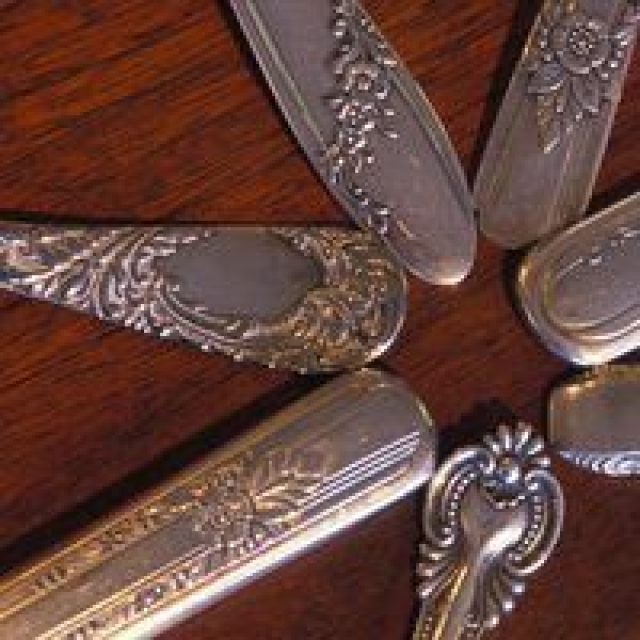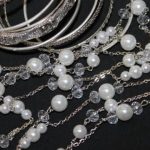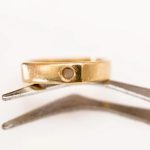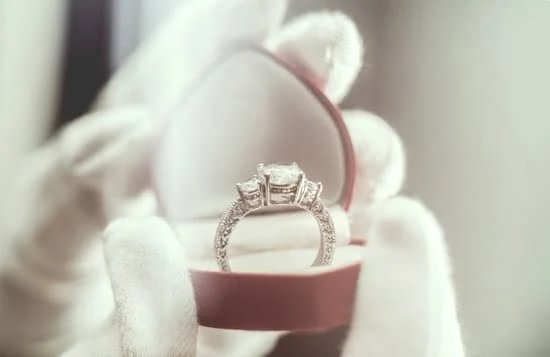The ability to repair jewelry can be a powerful asset. Jewelry usually holds some sort of emotional, sentimental value, and being able to fix it is an invaluable skill that not everyone possesses. Whether you’re trying to repair something passed down through the generations, or just a sentimental gift from someone special, being able to fix it yourself can save a lot of time and money. Repairing jewelry has many other benefits as well.
Training: How To Repair Jewelry
One way to learn how to repair jewelry is by taking classes specifically geared towards teaching how gemstones are set, how clasps are attached, and all the nuances associated with jewelry repairs. If finding the time for classes is difficult, there are many online tutorials on repair techniques that provide step-by-step instructions on mending necklaces and rings as safely as possible without damaging them further.
These tutorials may be particularly useful as they showcase various tools and tips that make repairing jewelry easier, including some processes such as soldering with non-traditional materials for those who want cheaper alternatives for their workbench. Lastly, YouTube is always a great option for troubleshooting certain issues specific to certain types of pieces like earrings or bracelets.
Costs Involved In Jewelry Repairs
The cost of repairing jewelry varies depending on the complexity of each task. Generally speaking though, simple fixes such as reattaching loops or changing clasps can range anywhere from $10-$30 per piece.
This doesn’t include fees for materials used during the repairs which will vary depending on the type of metal used in construction and weight/value/wearability required for each piece of jewelry. Additionally, specialized services like fabricating missing parts or antique repairs come with their own set of costs depending on their level of difficulty but can run upwards into hundreds (or even thousands) in select cases.
Types of Jewelry That Can Be Repaired and Restored
The great thing about having damaged jewelry is that you can often repair and restore it to look like new. Depending on the type of jewelry and how much damage has occurred, there are different steps that can be taken to get it back in excellent condition. In general, rings, necklaces, earrings, bracelets, and other handmade jewelry are the most common types of pieces that can be repaired with the help of a professional jeweler.
When attempting to repair or restore jewelry at home, it’s important to take safety precautions. This includes making sure you have protective gloves and eyewear on before handling delicate items such as stones or precious metals.
Attempting to do repairs without the proper safety equipment may lead to additional damages or injuries if not done correctly. Additionally, when repairing items it’s best to use tweezers while cleaning out any dirt or debris from settings as this will help avoid scratching any surfaces.
Once you have all the necessary materials at hand, the first step in repairing jewelry is assessing the damage. This involves closely examining all parts of the piece (including clasp functionality) and taking note of any flaws or breaks that need to be addressed first. After this initial assessment has been done, it’s then time for repairs which could involve tig welding broken parts together where applicable as well as replacing missing stones/beads if relevant.
Re-plating worn pieces with gold is also an option should you choose; however, due to its complexity this process should ideally remain in professional hands unless you possess extensive experience with plating. It’s also imperative that whatever type of repair is being done is performed correctly so the system remains solid and doesn’t suffer from future issues down the line.
An Overview of Repair Processes
Jewelry repair is a complicated process that involves careful evaluation or assessment of the piece, delicate manipulation of the metal and components, and skilled artistry in restoring or recreating original form. An experienced jewelry repair expert will first assess the jewelry to determine what repairs need to be done.
In many cases, it can be as simple as resetting stones back into place, replacing worn out clasps or broken pieces. In more extensive cases, such as the replacement of gemstones or other materials, the expert has to take extra care in ensuring that any alterations made blend with the existing design.
The actual process of jewelry repair depends on what type of repair needs to be done. For instance, a skilled practitioner may use a soldering technique when attaching components together, utilizing specialized equipment like an oxy-acetylene torch, flux paste, and metal rods for silver soldering and gold for gold welding.
At times metal must also be removed in order to join broken sections together which can be very difficult depending on how intricate the design is. Setting stones back into place after they’ve been loose due to wear and tear can also require specialized tools such as a prong pusher or alternatively stone-setting tweezers in order to manipulate stones without scratching them.
In some circumstances a jeweler may have to recreate specific details by hand if they are no longer present after damage has occurred. This usually requires skillful techniques such as mold making and lost-wax casting so that exact shapes can be replicated before re-applying any engravings or artwork onto the repaired jewelry piece.
The end result should look seamless with all areas equally polished for sparkle and shine so that each individual piece complements the completed work and looks like new again.
What Materials and Supplies Are Needed To Repair Jewelry
Depending on the complexity of the jewelry repair job, some pieces may be more involved than others. Repairs may range from simply sizing a ring to re-setting stones or replacing clasps. All repairs should be done using top quality materials, including tools for soldering and casting as well as polishing implements. Common supplies include solder in various colors, flux and pickling compounds, abrasives, gemstone settings and finding, burnishers and setting tools, tweezers and pliers in different sizes and shapes.
Before beginning any repairs, it is wise to draft a plan of action that clearly maps out all the steps that need to be taken to complete the job. Organizing all repair materials ahead of time saves time and can help prevent mistakes.
Always work with safety in mind by putting away tools when not in use and wearing safety glasses if necessary. Additionally, any chemicals used for cleaning or polishing should be handled carefully according to the package instructions-these are often toxic substances and must be disposed of safely after use.
Cleanliness is also an important factor in jewelry repair; dirt can ruin a piece if not removed before beginning work. In many cases this requires special dipping solutions or other chemical applications that must be used with caution because they may damage certain metals or gems if used incorrectly.
Jewelry should also be thoroughly inspected after cleaning; it is here where loose parts such as prongs should be identified to ensure they are replaced before further repairs are made. Following these simple steps can make all the difference when it comes to successful jewelry repair projects.
Where To Get Professional Repairs For Jewelry
Jewelry repair is a profession that requires specialized knowledge and expertise. Unfortunately, not everyone has access to the right professional in order to keep their beloved pieces in good condition. For those who find themselves in need of repairs, there are several options available.
The first step is to consult a local jeweler, such as one found in a shopping mall or jewelry store. These professionals specialize in jewelry repairs and often have the proper tools and materials needed for more intricate restorations.
They also typically have a wide range of replacement parts, from gemstones and settings to clasps and backings. A trained jeweler should have the necessary skills to clean, polish, inspect and repair damaged pieces, ensuring that they look as close to new as possible.
Another option is taking your piece of jewelry to a trusted antique shop owner or appraiser who can evaluate it for you and provide an informed opinion about whether or not it’s worth repairing. They may also be able to make minor repairs themselves or even refer you to another specialist with the right skillset.
Professional repair services will usually require that you send your item through the mail if they are not located near you; however they tend to offer exceptional service while preserving the integrity of the piece itself.
Finally, there are many online tutorials and resources available which provide instructions on how to make simple repairs yourself at home without much prior knowledge or skill level required-a great way for DIY enthusiasts who want maximum control over how their jewelry looks after it’s been repaired.
Though it’s always best to err on the side of caution when making any kinds of repairs yourself, doing so on simpler items like costume jewelry can certainly save time and money if done correctly.
How To Evaluate Jewelry Repair Providers
When it comes to jewelry repair, it is important that you ensure you are receiving quality service from a qualified and professional individual. The safety of your jewelry pieces should be your number one priority and taking the time to evaluate potential jewelry repair providers can help give you peace of mind that your jewelry is in good hands.
The first step to successfully evaluating jewelry repair providers is to thoroughly research the individuals, shops or businesses that offer this service. This involves asking questions such as: How long have they been offering their services? Are they experienced with the specific type of repair you need?
Do they have any reviews or references that can speak to the quality of their work? Checking out the credentials of those in the industry will better arm you with information regarding who best meets and exceeds all criteria for quality service.
The second step when evaluating a jeweler is looking at the price point for their services. Talk to different companies about their pricing and get a detailed overview on what exactly is included in various packages.
Comparing different prices from various jewelers will allow you to make an informed decision based on what fits your budget while ensuring top-notch workmanship. Furthermore, having open communication with potential jewelers will give you a sense of confidence that they understand what needs to be done with utmost precision and accuracy.
Tips For Keeping Jewelry In Great Condition
When it comes to jewelry, repairing or restoring it may be necessary depending on the condition of the piece. Jewelry is often expensive to replace significantly if it has any type of sentimental value.
It can also be an expensive ordeal if the piece contains gemstones or precious metals such as gold, silver and platinum. While some pieces of jewelry will require professional repair services such as those offered by an experienced jeweler, there are many simple repairs that a consumer can make at home with limited tools and materials.
Before attempting any repair on your delicate jewelry, it’s important to first consult with a professional jeweler who can advise you as to what materials and tools you may need for your particular job. Depending on the extent of damage, where possible you should try to clean your jewelry before attempting any repair work, because the dirt can interfere with the adhesive used during several repairs.
Additionally, proper cleaning keeps oil residue away, which can prevent successful adhesion between two surfaces.
Caring for your jewelry properly is essential in order to preserve its aesthetics and quality longevity. Properly storing all items when they are not being worn is an effective measure to take in this regard; as sun or humidity exposure can lead to oxidation while moisture exposure leads to discoloration on metals like silver and gold. Taking these steps to prevent damage will extend the life span of your investment in quality jewelry items.
Moreover storing these pieces away from abrasive objects would avoid scratches and other marks forming on them over time. Lastly for very expensive pieces luxury storage special lockers available that create a safe environment for their keeping away from dust and air circulation which result in oxidation and tarnishing of metal components over time. Thus proper care and regular servicing taken together ensure extended life maintenance.
Conclusion
Jewelry repair is an ancient and art form, often passed down from generation to generation. It is a wonderful opportunity for those who have an eye for detail and creative skill to work with precious materials and create beautiful pieces. Jewelry repair can require a lot of patience and care because even the smallest repairs can make or break the finished piece.
Not only that, but depending on the type of jewelry, there may be specific techniques needed in order to complete a professional-looking job. Additionally, some type of jewelers tools are needed – including basic tools like pliers, saws, drill bits and more – depending upon what type of materials are being worked with.
In terms of price, understandably – jewelry repair does add additional cost to the finished pieces. But having professional work means peace of mind for buyers as well as increased wearability over time due to longevity. Repairing emotional keepsakes alone or antique family heirlooms also makes them more valuable in not just monetary sense but also emotionally.
In short, jewelry repair requires extraordinary attention to detail which goes along with a wide understanding of materials used to create unique pieces. Even though it takes extra money upfront, repairing jewelry increases its wearability long term therefore adding up its worth in sentimental value over time too. Thus making it something precious we can pass down generations.

Welcome to my jewelry blog! My name is Sarah and I am the owner of this blog.
I love making jewelry and sharing my creations with others.
So whether you’re someone who loves wearing jewelry yourself or simply enjoys learning about it, be sure to check out my blog for insightful posts on everything related to this exciting topic!





